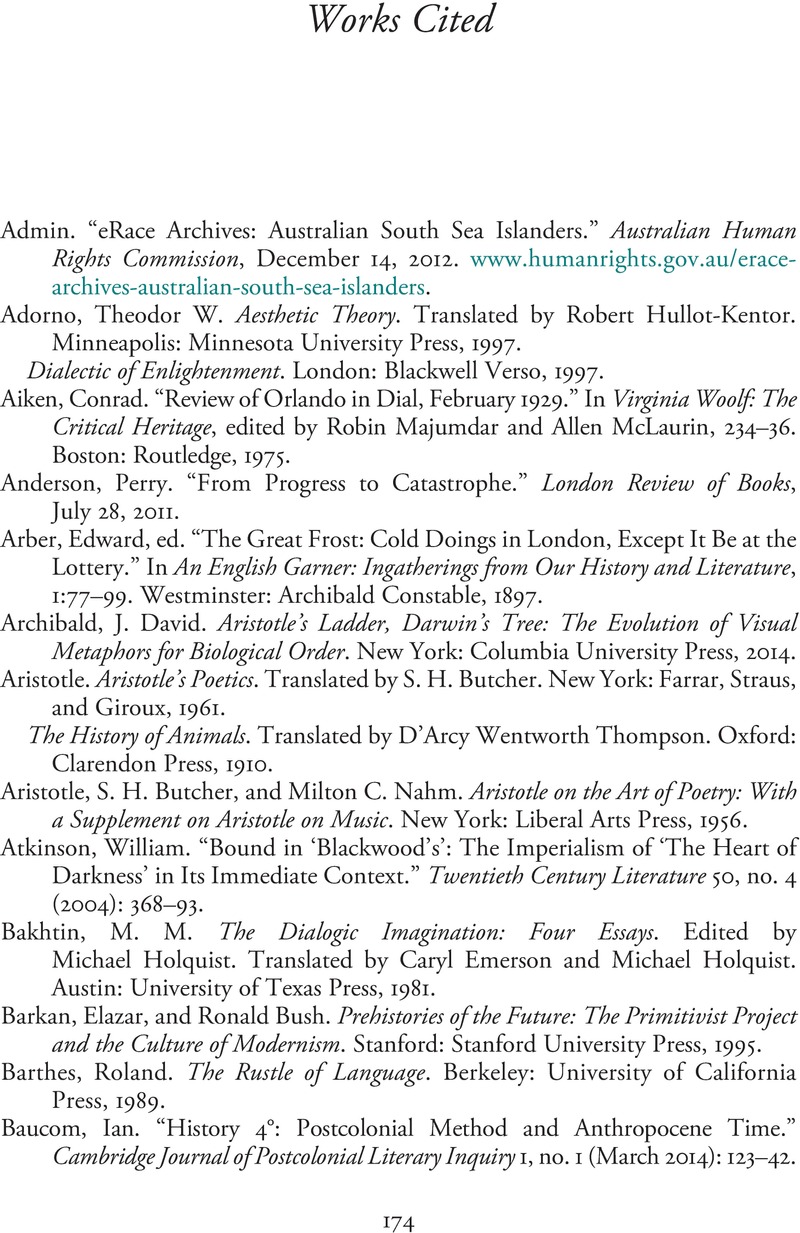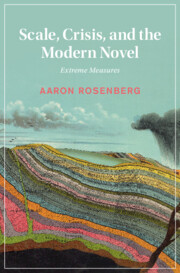Book contents
- Scale, Crisis, and the Modern Novel
- Cambridge Studies in Nineteenth-Century Literature and Culture
- Scale, Crisis, and the Modern Novel
- Copyright page
- Dedication
- Contents
- Figures
- Acknowledgments
- Introduction
- Chapter 1 Rescaling Romance
- Chapter 2 Infinitesimal Lives
- Chapter 3 Joseph Conrad and the Scalability of Empire
- Chapter 4 Virginia Woolf and the Problem of Generations
- Conclusion
- Notes
- Works Cited
- Index
- Cambridge Studies in Nineteenth-Century Literature and Culture
- References
Works Cited
Published online by Cambridge University Press: 26 October 2023
- Scale, Crisis, and the Modern Novel
- Cambridge Studies in Nineteenth-Century Literature and Culture
- Scale, Crisis, and the Modern Novel
- Copyright page
- Dedication
- Contents
- Figures
- Acknowledgments
- Introduction
- Chapter 1 Rescaling Romance
- Chapter 2 Infinitesimal Lives
- Chapter 3 Joseph Conrad and the Scalability of Empire
- Chapter 4 Virginia Woolf and the Problem of Generations
- Conclusion
- Notes
- Works Cited
- Index
- Cambridge Studies in Nineteenth-Century Literature and Culture
- References
Summary

- Type
- Chapter
- Information
- Scale, Crisis, and the Modern NovelExtreme Measures, pp. 174 - 183Publisher: Cambridge University PressPrint publication year: 2023



